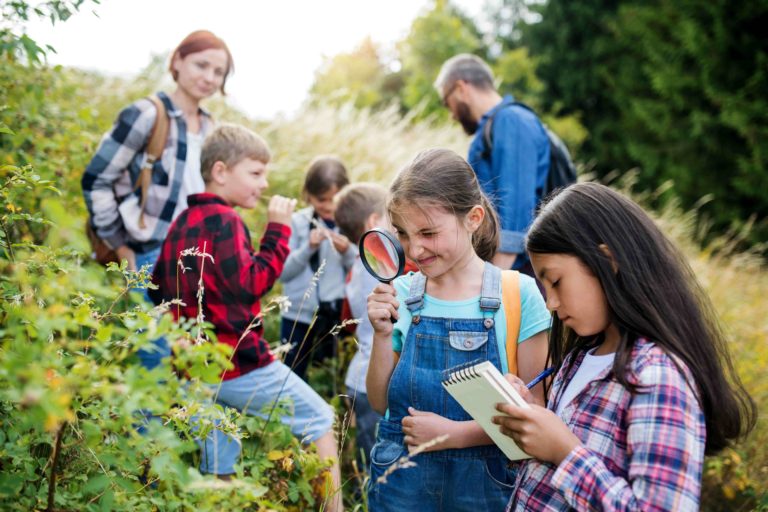As technology advances, standard business operations change, and the way we live from day-to-day evolves, schools must advance, change, and evolve as well. Schools cannot afford to maintain the status quo and keep doing things the “old school” way. Kids today are not “old school”, and an “old school” education is not going to leave them prepared for the roles they must one day step into as productive citizens. Therefore, what are the necessary steps to bring education into the present? Are there new, creative ways to teach content to students? Can we implement strategies that promote more real-world learning situations to better prepare our students? It may be that a component of project-based learning is the approach to take. Experimental learning units, when fully and effectively implemented, can be transformative for students and educators.
What are Experimental Learning Units?
Defining experimental learning units is not straightforward. Let’s start by saying that experimental learning units are activities through which students are fully immersed in the learning. These units are driven by student inquiry. Experimental learning units, much like project-based learning, is a real-word experiment that is contextual. These units are cross-curricular. Experimental learning units begin with a driving question or problem. These units are also more long-term activities that can last anywhere from one week to a semester. They most likely will involve learning that takes place outside of the school and will certainly involve the community. They can focus on any subject area and are interdisciplinary. There are three necessary components in experimental learning units: an essential question, scaffolding, and community involvement.
How to Create an Experimental Learning Unit
In order to create an effective experimental learning unit, the three components — essential question, scaffolding, and community involvement — must be central. In addition, experimental learning units are especially conducive to middle and high schools in which content areas are more specific. Of course, experimental learning units can be modified for younger students. However, with older students, there is an increased likelihood of having flexibility in regards to alternative locations or trips for learning. To develop your own experimental learning unit, follow these critical steps:
- Create an Essential Question – An essential question is a question that the project is centered on and evokes students’ critical thinking and creativity to find an answer. An essential question is an open-ended question that can have multiple solutions. A good essential question will be one that relates to students’ lives and can be looked at from different perspectives.
- Examples of essential questions for experimental learning units:
- What is the best way to make use of available land? – Consider the perspectives of corporations, residents, farmers, and more. Consider the effects on the economy.
- How can we protect our local environment? – This can involve testing water and soil samples, discovering the source of pollution, studying the effects on the local ecosystem, and working with community members and business leaders to develop ways to make improvements.
- How can we stop childhood hunger in our area? – This can include finding where the need is and working on ways to source it. A community garden can be developed. Community leaders can be called upon to contribute to the solutions.
- Implement Student-Centered Learning Using Scaffolding
If experimental learning units are anything, they are student-centered. However, students must have a great deal of support in place before they can be expected to produce the desired results. This is where scaffolding comes in. Scaffolding, simply stated, is any technique that progressively moves students to a deeper understanding and greater independence. For experimental learning units, this begins with introducing background material related to the subject being explored. That may mean laying the foundation for the importance of proper nutrition and how health can be affected before exploring a question regarding putting an end to childhood hunger in a community; or it may mean learning about the economy and how developers make use of land before exploring a question about the best uses of land. After that foundation, teachers should guide students through the initial questioning stages and help with some testing or interviews. Gradually the teacher gives the project over to the students after scaffolding and getting them off to a strong start. Without scaffolding, students are thrown into the deep end far too soon, and this type of learning unit would not be successful or even possible.
- Involve the Community
The third and final component that must be included in experimental learning units is community involvement. Whether that means reaching out to residents for interviews regarding a problem or working with leaders to improve the lives of people in the community, this is where the rubber meets the road. This is where the standard or objective becomes real-world. In an era in which our children are typically more socially challenged than children in past generations due to the prevalence of “screen time overload” in American families, it is critical that the school/educator provides the opportunity for students to learn ways to communicate with and relate to people in their communities. Not only does it help the students improve socially and feel a sense of ownership and accomplishment, but it unites the school, teachers, students, and community in improving the education of the students, as well as solving the community issue being tackled.




